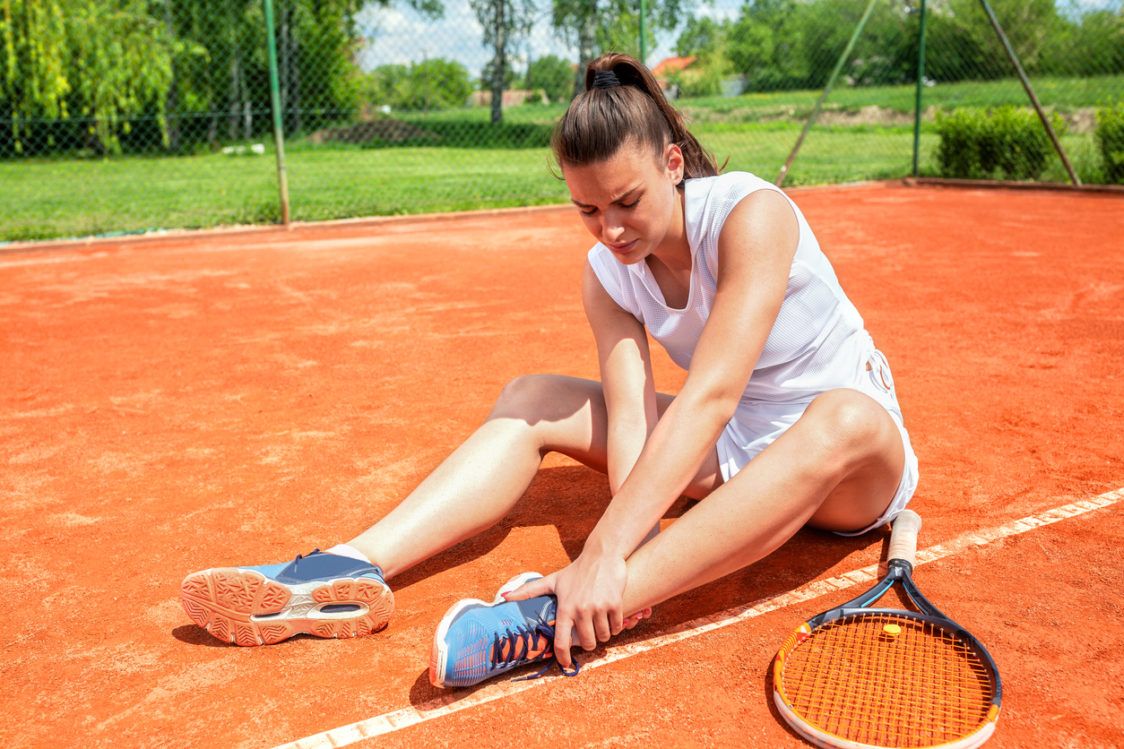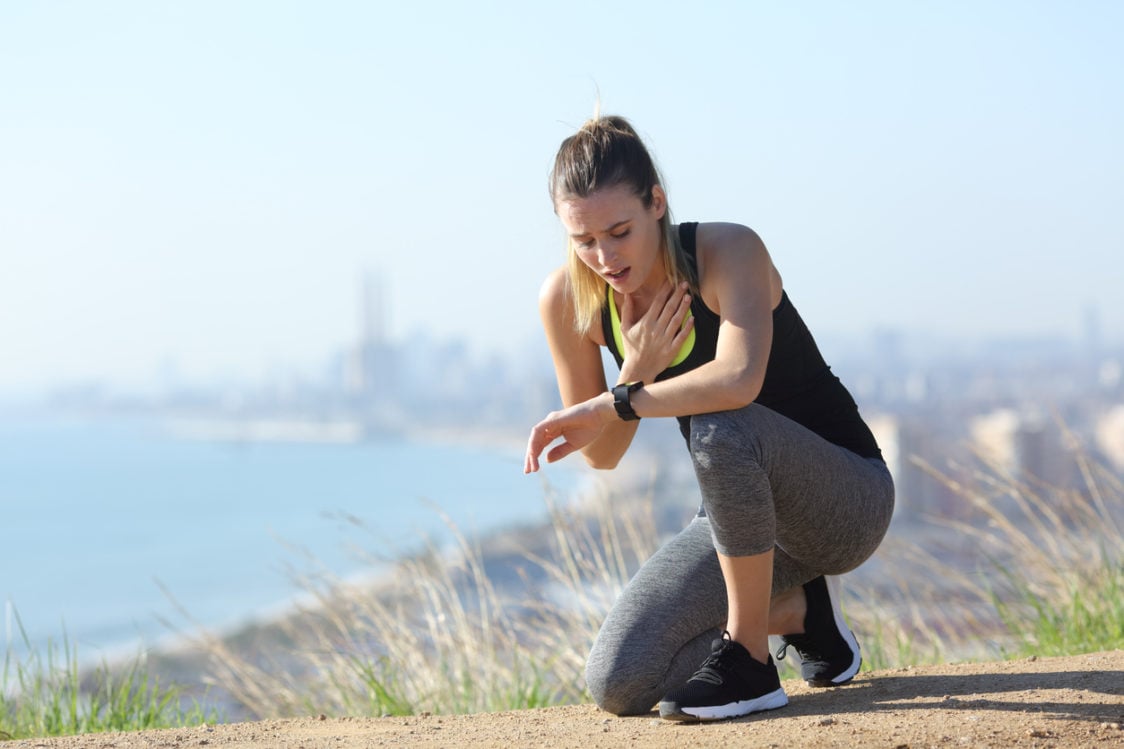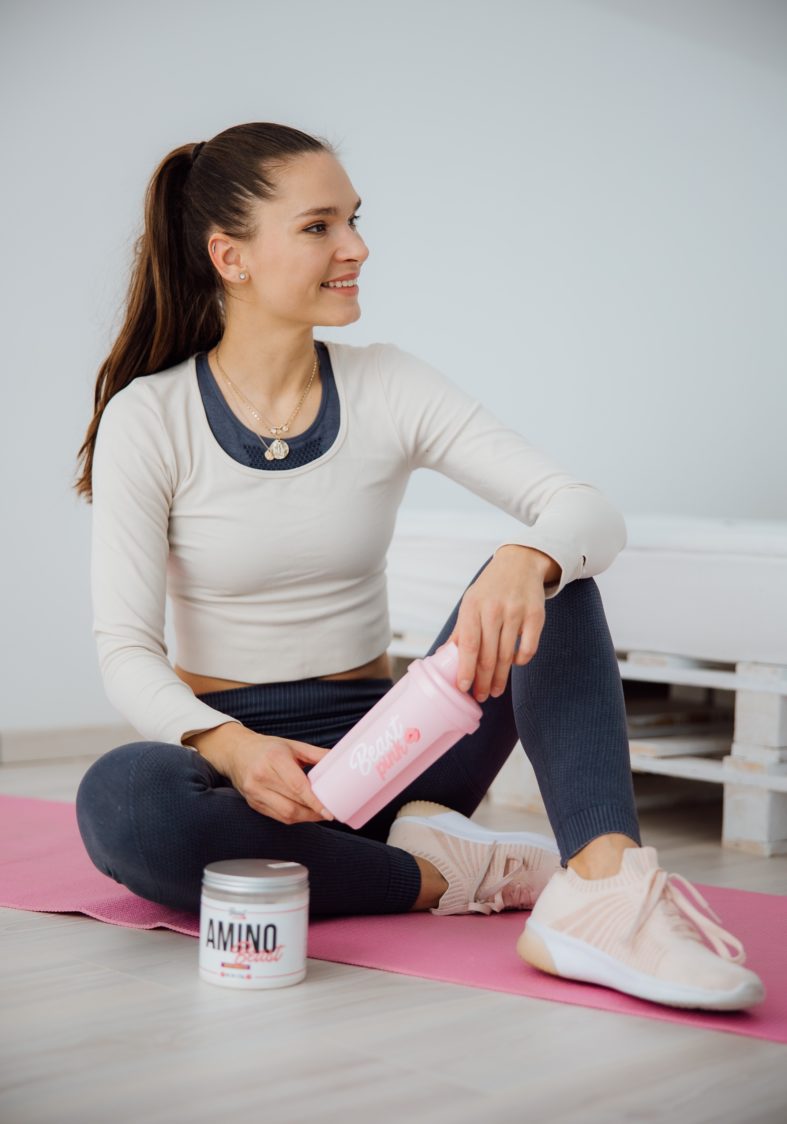Table of Contents
Much of the Western world faces excessive calorie intake and inactivity, leading to obesity and related health risks. On the other side of the spectrum, there is a smaller but also important group of people who do not lack physical activity but do not have an adequate calorie intake. This is often due to the pursuit of a high sporting performance, the constant pressure from their surroundings to improve, but also some idea of a look that fits the sport. The pursuit of a perfect appearance is one of the most common causes of excessive exercise and low calorie intake in women who mistakenly believe that this is how they achieve the “perfect body”.
Today’s article will focus on women in particular. As you know, the issue of appearance is not only a concern in certain sporting disciplines, but the so-called ideals of female beauty have changed over the years. And with it, the demands on women’s appearance has also changed.
I’m sure films from Victorian times in England have not escaped your attention with the skin-tight corsets that shape women’s hourglass figures. The inability to breathe properly probably contributed to a change in the ideal, with the trendy boyish figure and flat chest. But this freedom did not last long for women, for then the divine Marilyn Monroe took the throne and the hourglass shape was back. In the 1960s, female ideals were dominated by Twiggy, who was very slim with an almost prepubescent figure and was replaced by supermodels who were tall, slim, but still feminine. During the nineties, to be sickly thin was again very popular, and that leads us to current times, where women have a particularly hard time. They are asked to have figures like Kim Kardashian, but also a slender waist and a flat belly.
This brings us back to our professional and hobby sportswomen, who are also asked to look a certain way. They are pressed by coaches, society, social networks, and they respond with excessive sporting activity and an inadequate diet, often resulting in health risks under the heading of the female athlete triad, which is the subject of today’s article.

The female athlete triad has 3 important features
The combination of the female athlete triad contains three symptoms that are closer to women in particular. This includes reduced energy availability, menstrual problems and bone thinning. More recently, however, studies show this “phenomenon” has tended to refer to relative energy deficiency syndrome, or RED-S. [1]
The RED -S label is more relevant as most of the problems arising from this syndrome are covered by the main denominator, namely the disparity between energy intake and output and the resulting low-energy availability. And it’s also already known that energy intake problems are not only women’s prerogatives, but also men’s. [1]
1. Low energy availability or low or inadequate energy intake
Athletes are unique in their high nutritional needs, which support their sporting performance, injury prevention and, most importantly, overall health and well-being. For this reason, it is important that their diet is commensurate with the training load, but also with everyday life. Especially for women, who hear from all sides how much they should weigh, how they should look and act at the top of their game; therefore this can be quite a challenge. It is energy availability that will help us to identify (non-)sufficient energy intake.
The energy availability (EA) is determined by subtracting the energy output (EO) during sport from the total energy intake (EI) and dividing the result by the amount of FFM (fat-free mass – weight after subtracting kg of body fat) of the individual. It’s the energy you have left when you subtract what you’ve spent on training and this is used to maintain normal body functions and for everyday activities outside of sports.
Energy availability values are distributed as follows:
- A high risk value is less than 30 kcal/kg/FFM
- Value tolerated in the short term for weight loss 30 – 45 kcal/kg/FFM
- Optimal value is 45 kcal/kg/FFM
- For healthy weight gain the value is greater than 45 kcal/kg/FFM
In men, the optimum value is lower at 40 kcal/kg/FFM, mainly because they do not develop low-energy availability syndrome as often. How energy availability is determined is best illustrated by a practical example. [2-3]
How to calculate energy availability?
Example 1
Female endurance runner weighing 50kg with 12% fat (= 44 kg fat-free FFM), in training (running, 90 minutes) burns 1000 kcal and its energy intake is 2300 kcal/d.
ED = EP – EV = 2300 – 1000 = 1300 kcal
ED/FFM: 1300/44 = 29.5 kcal/kg/FFM – the value of energy availability and hence the higher risk of developing health problems.
Example 2
Female dancer weighing 60kg with 15% fat (51 kg FFM), in training (medium intensity dance, 90 minutes) burns 700 kcal and its energy intake is 3000 kcal/d.
ED = EP – EV = 3000 – 700 = 2300 kcal
ED/FFM = 2300/51 = 45 kcal/kg/FFM – optimal energy accessibility
Example 3
A fitness-loving woman, weighs 65kg with 18% fat (53 kg FFM) 3 times a week does strength training and runs three times a week, burns 511 kcal on average during training (60 minutes) and her energy intake is 2200 kcal.
ED = EP – EV = 2200 – 511 = 1689 kcal
ED/FFM = 1689/53 = 31.9 kcal/kg/FFM – a value that could be tolerated in the short term when losing weight but is not optimal for health
If we compare these three athletes, the first one, a runner with a risk level of EA, may eventually encounter or already have the symptoms of athlete triad present, and her health is in danger. She may eventually experience absence of menstruation or osteoporosis. In order to optimize her energy availability value and thereby promote her health, she should increase her energy intake to at least 3000 kcal.
The other woman (dancer) probably has enough energy for normal life function, and if she continues with her current intake, she will significantly reduce the risk of triad-related health problems and low-energy intake.
The fitness lover may not have narrowly missed the value of energy availability risk, but this intake is not ideal for her health in the long run. It should only be maintained in the short term for the need for a well-set weight loss plan. She should increase her energy intake for optimal energy availability to 2900 kcal.
You might be interested in these products:
2. Irregular menstruation or it’s absence
Absence of menstruation is one of the most common symptoms of low-energy availability syndrome, and it is nothing that should be taken lightly, since in the worst case it can threaten a woman’s future fertility. This often happens when, after exhausting most of the calories received for sport, there is no longer enough energy left for important bodily functions, and the hypothalamus (the gland that controls hormone production) restricts or stops the production of sex hormones (especially oestrogen and progesterone), which are tasked with regulating the menstrual cycle. The body thus saves energy where it can to ensure the most important functions associated with the primary goal are achieved – survival.
It doesn’t happen with all athletes at risk of low EA, but if this symptom appears, it means that there’s something wrong. However, there may be another reason for the loss of menstruation, and if this occurs in a girl or woman, she should definitely consult a doctor. Studies looking at the loss or irregular menstruation of women or adolescent girls have shown that this problem was more common in female athletes. [4-5]
3. Decreased bone density leading to thinning
Reduced production of sex hormones may not only leave a mess in the form of irregular or absent periods, but may also negatively affect bone health. Based on low oestrogen production, bone thinning (osteoporosis) can occur as a precursor to frequent fractures. Normal oestrogen production is particularly important in adolescent girls and young women (approximately up to the age of 30) because bone mass is most active in the body at this time. In later years, bone density is harder to increase. [6-7]

Why does the athlete triad arise and who is most at risk?
There are many factors that can lead women, or sometimes men, to develop health problems resulting from low energy intake, and that particular “trigger” can be different for each individual and difficult to detect retrospectively. However, the main factors affecting women (athletes) are found in their surroundings.
They are parents, coaches, other members of the sports team, culture, economic factors, education, work and society as a whole. Social networks also play a significant role, which can greatly affect the perception of one’s own body and often lead to meaningless comparisons (trying to look like someone’s role model). Then a small note or recommendation from any of the named is enough, and the problem is there for the world to see.
Women then make inappropriate adjustments, which are often reflected:
- in eating habits – they adopt strict diets,
- in training – take on extra training, increase their intensity,
- in mental health – low self-esteem, excessive desire for slimness.
This problem does not only affect women, but also men, especially from endurance sports (cycling and others, which are characterized by massive output), are at risk of RED-S syndrome and this can also result in serious health consequences. In men, low-energy availability syndrome may manifest itself, for example, by lowering testosterone levels. If you are wondering how testosterone deficiency manifests itself, read our article 10 Symptoms of Testosterone Deficiency – What Causes It and How to Address It?
You may already know which particular sports sectors are at risk. These are all sports where emphasis is placed on the weight and body proportions of the individual.
This includes sports:
- that have weight categories and limits (e.g. combat sports),
- where a lower weight is an advantage (e.g. horse riding),
- that require a low weight (endurance running, cycling, cross-country skiing),
- where emphasis is placed on appearance and aesthetics (e.g. fitness, bodybuilding, ballet, gymnastics, dance, figure skating),
- that use revealing or tight – fitting sportswear (e.g. beach volleyball, swimming, athletics, cheerleading).
It’s also important to note that the female athlete triad may not only affect pro athletes, but also those amateur, recreational athletes who often have similar goals to professionals. [8-10]
The fact that women and girls do not have it easy in the modern gymnastic world and often suffer from eating disorders is evidenced by Monica Míčková’s personal experience, which she shared for the Without Phrases project: “There were twelve girls in the team at the time. Everyone’s been through a crisis. We were all starving and then overeating, a few cases of anorexia and bulimia. I put my fingers down my throat a few times right after I ate, but I was never very good at throwing up. That’s why I used to take laxatives more often, so I’d feel like I could get everything out of my system as quickly as possible.” [8-10]

What can happen to your body when you eat very little and train hard?
Even though these are areas of physical health, many of these symptoms and consequences are not visible at first sight, and it is difficult to discern what is behind them. Among the impacts of low-energy availability (RED-S) on physical health, we do not only count those 3 mentioned above, but there are many more.
19 examples of the negative effects of the athlete triad on the female body
- Weight loss,
- chronic tiredness,
- impaired growth and body development,
- osteoporosis, or bone thinning,
- skin problems – for example, acne,
- hair loss,
- headache,
- anaemia,
- digestive problems – flatulence, constipation,
- increased risk of cardiovascular disease associated with long-term low oestrogen levels;
- metabolic changes – slowing of metabolism,
- cold intolerance,
- increased tooth decay,
- weakened immunity resulting in frequent illness;
- irregular or absent menstrual cycle,
- frequent musculoskeletal injuries, especially fatigue fractures,
- impaired regeneration and healing of injuries,
- lower glycogen stores in the body – carbohydrate storage. [11-14]
What influence does the female athlete triad have on psyche and behaviour?
Excessive exercise, reduced dietary intake or a combination of the two leading to low energy availability can also affect the mental health and behaviour of female athletes. Symptoms of the Athlete Triad and RED-s surrounding mental health include:
12 examples of negative impacts on women’s mental health and behaviour
- excessive criticism of your own body weight and excessive dissatisfaction with your figure,
- excessive interest in food and calories,
- a tendency to exercise excessively,
- sporting performance does not correspond to increased training effort,
- frequent mood changes,
- depression,
- irritability
- worsening concentration,
- impaired judgment,
- eating in secret or hiding uneaten food,
- visiting the bathroom straight after eating,
- overuse of laxatives, diuretics and weight loss medicines. [11-14]

Why is the female athlete triad so dangerous and why should we talk about it more?
All its symptoms and impacts can have very serious health consequences, both in the short and long term. Most may be directly or indirectly affected by diet. Food and related eating habits affect many aspects of life (physical and mental health) and provide not only energy for training, but also for everyday activities, further promoting proper physical development, regeneration, normal body function and overall health. You can also read about proper nutrition in the article What Is a Healthy Diet and How to Learn to Eat Healthily?
Unfortunately, the incidence of female athlete triad is quite common among female athletes, and it is reported that 50-60% of female athletes admitted to having experienced one or more symptoms (reduced energy availability, menstrual problems or bone thinning). Given the potential health consequences, it is important to inform both the professional and recreational sports public about the problem. The fact that the International Olympic Committee has already commented on RED-S and the female athlete triad is also a testament to the importance of this issue. [13-14]
Is it possible to prevent the emergence of the female athlete triad?

Yes, it is certainly possible, through the education of family, coaches and also the athletes themselves and spreading awareness to the wider public. Anyone who works with young athletes should be aware of how much influence they can have on them. Instead of constant criticism and strict restrictions, coaches should thoroughly explain to girls how to eat properly, why sufficient nutrition is important, and that excessive exercise is not the best way to get a dream trophy.
For teenage female athletes, everything should be covered by parents who have an overview of all their child’s activities, and if they are concerned about their child’s health or fear that their child’s coaching approach is not “ideal” for their child, they should consult other nutritionists, coaches and also sports doctors. [15]
Key points for prevention of female triad athletes and RED-S:
- education on nutrition and energy accessibility;
- lower body weight does not always mean better performance and greater success,
- great sportsmanship is not always equal to a healthy athlete – in the long run, weakened health usually translates into poorer performance,
- the multidisciplinary team, headed by a doctor, trainers and other members of the team surrounding athletes, should focus on early recognition of symptoms of low-energy availability. [16]
The treatment of the athlete triad is complex. What does it consist of?
When considering the appropriate therapy for athlete triad or RED-S, it is important to consider the individual athlete, their symptoms and health problems, the presence of any menstrual problems in women, actual sporting performance, goals and other aspects of their life. This is a broad issue that should be addressed from multiple perspectives, so a multidisciplinary approach is important. The treatment of RED-S should involve a physician, a nutritionist – preferably with a focus on sport nutrition and often the involvement of a psychologist. [17-19]
The faster the treatment and resolution of this problem begins, the better the prognosis for recovery. The aim of therapy is to achieve optimal energy accessibility for sport and health and to ensure the possibility of sporting and training at a safe level. [17-19]
1. First and foremost, it is necessary to consult with an expert in sports training and nutrition

Current energy availability should be identified first (see examples above). It is certainly worth mentioning here that a stable weight without signs of weight loss does not always mean sufficient energy intake.
Reduced energy availability affects metabolism and the hormonal system, and it is possible that the body has already adapted to a low dietary intake and therefore weight does not shift.
- A value of 45 kcal/kg/FFM per day is recommended to replenish the body’s stores and set adequate energy intake.
Consultation with a nutritionist should not only lead to setting an appropriate energy intake, but the client should leave with recommendations for specific sources of proteins, carbohydrates and fats and recommendations for possible supplementation (calcium, vitamin D and other vitamins and minerals according to the specific needs of the client).
In case you are interested in how to gain weight healthily, read our article 10 Tips for Healthy Weight Gain.
It is also often necessary to make adjustments during training, in the sense of reducing the overall training volume and load intensity. The coach should adjust the training according to current options, needs and goals of the athlete. All this can be consulted with a physiotherapist. [17-19]
If you want to read more about the suitable selection of vitamins, read our article Do You Really Need to Take Multivitamins?
2. It is important to focus on mental health
As shown above in specific examples of RED-S, it can also affect mental health and behaviour, and for this reason, therapy cannot happen without the help of a psychologist or psychotherapist. Mental health professionals can help treat depression, anxiety, or eating disorders. [17-20]
If you want to read more about stress and its effect on our health,read our article Why Is Stress Dangerous for Us and How to Reduce It?
3. The need for medication and general management should be evaluated by a doctor
The doctor should examine their patient thoroughly (examination of the locomotor system, heart function, biochemical determination of vitamins and minerals, etc.), focus on current problems and their possible treatment with medications or modifications in diet and training. And if necessary, should refer the patient to specialists (orthopaedic surgeon, sports doctor, etc.). [17-20]
4. Treatment should be covered by a supportive family and environment
Family, friends and those in your close surroundings can all contribute greatly to athlete triad or RED-S therapy thanks to their emotional support.
What is the lesson?
Female Athlete Triad, or in the more up-to-date term of RED-S Syndrome, occurs in a wide range of sporting sectors that focus on appearance, body weight and aesthetics. The serious health problems that can arise from RED-S Syndrome stem from low energy availability. RED-S Syndrome can be prevented, mainly by having coaches, doctors and other team members around for athletes as support and discuss its possible consequences and preventive measures and educate themselves in this area. And should the problem arise, it should be resolved as quickly as possible, mainly by adjusting the diet and training schedule.
Do you have any personal experience with the athlete triad and low-energy intake with demanding sporting activity? Don’t be afraid to share your experience with us and show everyone that this topic is not taboo. If you liked this article, share it to encourage the dissemination of information on an important topic, the female athlete triad.
[1] Mountjoy, M., Sundgot-Borgen, J., Burke, L., Carter, S., Constantini, N., Lebrun, C., Meyer, N., Sherman, R., Steffen, K., Budgett, R., & Ljungqvist, A. The IOC consensus statement: Beyond the Female Athlete Triad—Relative Energy Deficiency in Sport (RED-S). – https://doi.org/10.1136/bjsports-2014-093502
[2] Holtzman, B., & Ackerman, K. E. Measurement, Determinants, and Implications of Energy Intake in Athletes. – https://doi.org/10.3390/nu11030665
[3] Melin, A. K., Heikura, I. A., Tenforde, A., & Mountjoy, M. Energy Availability in Athletics: Health, Performance, and Physique. – https://doi.org/10.1123/ijsnem.2018-0201
[4] Cockburn, Claremont, Fremantle. Relative Energy Deficiency in Sport RED-S. – https://www.perthsportsmedicine.com.au/relative-energy-deficiency-in-sport-perth-claremont-cockburn-wa.html
[5] Redman, L. M., & Loucks, A. B. Menstrual disorders in athletes. – https://doi.org/10.2165/00007256-200535090-00002
[6] Kumar, D. P. Female Athlete Triad: Causes, Symptoms, And Treatments. – https://www.medlife.com/blog/female-athlete-triad-causes-symptoms-and-treatments
[7] Baxter‐Jones, A. D., Faulkner, R. A., Forwood, M. R., Mirwald, R. L., & Bailey. Bone mineral accrual from 8 to 30 years of age: An estimation of peak bone mass. – https://doi.org/10.1002/jbmr.412
[8] Prajapati, S. Female Athlete Triad: Risk Increasing Factors and Prevention Procedures. – https://www.researchgate.net/publication/318081101_A_Study_Evaluating_the_Risk_of_Female_Athlete_Triad_among_Basketball_Players
[9] Bez cukru. Bez frází. – https://www.bezfrazi.cz/bez-cukru/
[10] Wasserfurth, P., Palmowski, J., Hahn, A., & Krüger. Reasons for and Consequences of Low Energy Availability in Female and Male Athletes: Social Environment, Adaptations, and Prevention. – https://doi.org/10.1186/s40798-020-00275-6
[11] Neuls, F., & Frömel, K. (b.r.). Pohybová aktivita a sportovní preference adolescentek.
[12] National Collegiate Athletic Association. ENERGY AVAILABILITY. – https://www.sportsrd.org/wp-content/uploads/2018/11/Energy_Availability_Fact_Sheet_WEB.pdf
[13] CPE Monthly: The Female Athlete Triad, Relative Energy Deficiency in Sport—Today’s Dietitian Magazine. (b.r.). – https://www.todaysdietitian.com/newarchives/0217p46.shtml
[14] Mountjoy, M., Sundgot-Borgen, J., Burke, L., Carter, S., Constantini, N., Lebrun, C., Meyer, N., Sherman, R., Steffen, K., Budgett, R., & Ljungqvist, A. The IOC consensus statement: Beyond the Female Athlete Triad—Relative Energy Deficiency in Sport (RED-S). – https://doi.org/10.1136/bjsports-2014-093502
[15] Hobart, J. A., & Smucker, D. R. The Female Athlete Triad. American Family Physician. – https://www.aafp.org/afp/2000/0601/p3357.html#:~:text=The%20female%20athlete%20triad%20is,devastating%20for%20the%20female%20athlete.
[16] FIFA Medical Platform. RED-S – prevention.
[17] Relative Energy Deficiency in Sport (RED-S). – https://doi.org/10.1136/bjsports-2014-094559
[18] Health, R. M. RED-S Syndrome an easier entry into eating disorders treatment for athletes. – https://thebodyimagecenter.com/news-blogs/eating-disorder-treatment/red-s-syndrome-easier-entry-eating-disorders-treatment-athletes/
[19] Briggs, C., James, C., Kohlhardt, S., & Pandya. Relative Energy Deficiency in Sport (RED-S)--a Narrative Review and Perspectives from the UK. – https://www.germanjournalsportsmedicine.com/archiv/archive-2020/issue-10/relative-energy-deficiency-in-sport-red-s-a-narrative-review-and-perspectives-from-the-uk/
[20] Robertson, S., & Mountjoy. A Review of Prevention, Diagnosis and Treatment of Relative Energy Deficiency in Sport (RED-S) in Artistic (Synchronized) Swimming. – https://doi.org/10.1123/ijsnem.2017-0329


Add a comment